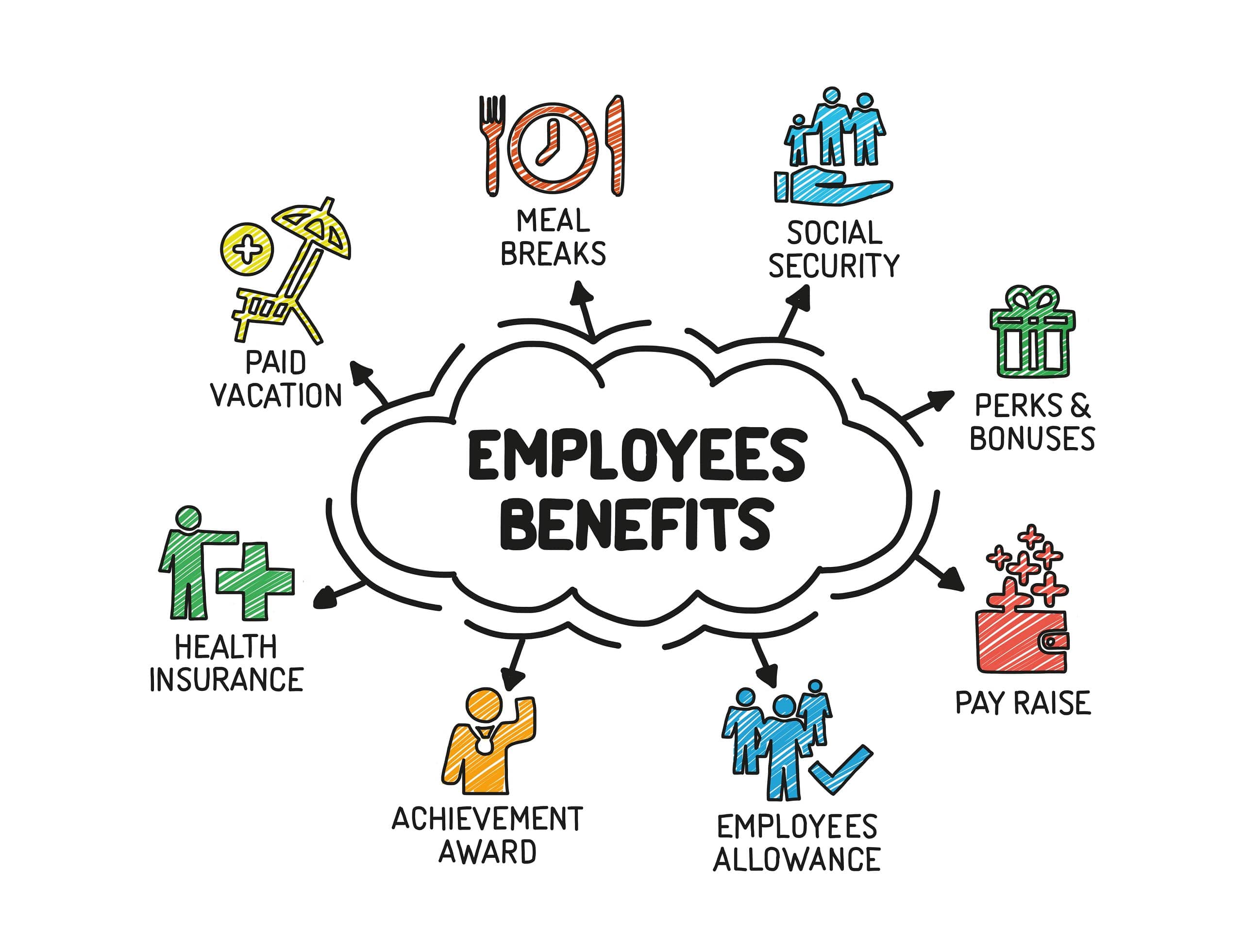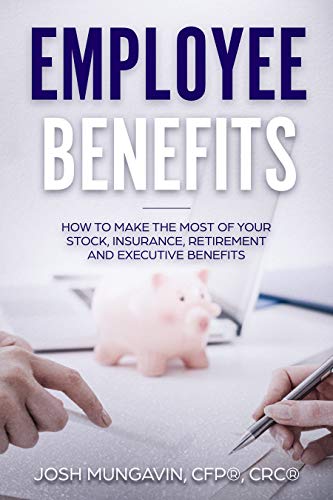How To Make The Most Of Your Employee Benefits
Welcome to “How To Make The Most Of Your Employee Benefits,” a guide designed to help you unlock the full potential of the perks and rewards your job offers. From understanding your healthcare options to maximizing your retirement savings and making the most of your wellness programs, this article will provide you with practical tips and insights. You’ll discover how to navigate the often confusing world of employee benefits, empowering you to make informed decisions and ultimately enhance your overall wellbeing and financial stability.
Have you ever taken a close look at your employee benefits? When was the last time you really dove into what’s available to you through your employer? If you’re like most people, you may not be fully aware of just how much value you’re leaving on the table. In this guide, we’ll explore how to make the most of your employee benefits, unlocking not just financial gains but also opportunities for personal growth and well-being.
Understanding Your Employee Benefits
Before diving into the specifics, it’s crucial to understand what employee benefits are and why they matter to you. Employee benefits are various types of non-wage compensation provided to employees in addition to their normal wages or salaries. These can include health insurance, retirement plans, paid time off, and various other perks.
Why Employee Benefits Matter
Employee benefits can significantly impact your overall job satisfaction and financial well-being. They offer security and opportunities that can help you advance both personally and professionally. Knowing how to maximize these benefits can lead to greater satisfaction not just in your job, but in your life outside of work as well.
Health and Wellness Benefits
One of the most substantial aspects of your employee benefits package likely revolves around health and wellness. Here’s how you can make the most out of them.
Health Insurance Plans
Health insurance is often the cornerstone of an employee benefits package. Here’s what you need to look into:
- Understand Your Coverage: Read through your plan’s summary of benefits and coverage. Know what’s covered, what’s not, and any out-of-pocket costs you might incur.
- Use Preventive Services: Many health plans offer free preventive services like vaccinations and screenings. Utilizing these can help catch health issues early, saving you money and stress in the long run.
- Flexible Spending Accounts (FSAs) and Health Savings Accounts (HSAs): These accounts allow you to save pre-tax money for medical expenses. Understanding the differences and benefits of each can save you money on healthcare costs.
Vision and Dental Insurance
Don’t overlook these often underutilized benefits:
- Regular Check-ups: Utilize your vision and dental insurance for regular check-ups. Preventive care can catch issues early and save you significant costs.
- Maximize Your Allowance: Understand what your insurance covers for eyewear or dental work and make the most of it.

Financial Benefits
Maximizing your financial benefits can greatly enhance your long-term financial security. Here’s how to get the most out of what your employer offers:
Retirement Plans
Most companies offer some type of retirement savings plan, such as a 401(k). Here’s how to make the most of it:
- Employer Match: If your employer offers a match, contribute at least enough to get the full match. This is free money that contributes significantly to your retirement fund.
- Investment Options: Familiarize yourself with the different investment options within your plan. Choose a mix that aligns with your risk tolerance and retirement timeline.
- Regular Contributions: Make it a habit to contribute regularly, even if it’s a small amount initially. Consistency over time can have a big impact.
Stock Options and ESPPs
Some companies offer stock options or Employee Stock Purchase Plans (ESPPs). Here’s a quick guide:
- Understand Your Options: Know the difference between incentive stock options (ISOs) and non-qualified stock options (NSOs). Each has different tax implications.
- Participate in ESPPs: If your company offers an ESPP, consider participating. These plans allow you to purchase company stock at a discount.
Bonus and Incentive Programs
Make sure you’re familiar with any bonus structures or incentive programs your company offers:
- Performance Bonuses: Understand the criteria and goals required to achieve these bonuses.
- Referral Bonuses: Many companies offer bonuses for referring new employees. Keep an eye out for opportunities to refer people in your network.
Work-Life Balance
Your benefits package might include several perks that contribute to a better work-life balance. These benefits can enhance your overall quality of life.
Paid Time Off (PTO)
Understand your company’s policy on paid time off:
- Accrual Rates: Know how you accrue PTO and any caps on accumulation.
- Scheduling: Be strategic about when you take your time off to maximize its benefit to you.
Flexible Work Arrangements
Many employers now offer flexible work options:
- Remote Work: If available, take advantage of remote work opportunities to save on commuting time and costs.
- Flexible Hours: Adjust your work hours to better fit your lifestyle and family commitments.
Parental Leave
Check if your company offers parental leave benefits beyond the legal minimum:
- Understand Your Rights: Know the company’s policy on maternity, paternity, and adoption leave.
- Utilize the Time: Make sure to take the necessary time off to be with your family, as it’s critical for both your well-being and the well-being of your child.

Professional Development
Investing in yourself through professional development is another valuable way to maximize your employee benefits.
Educational Assistance
Many companies offer tuition reimbursement or educational assistance:
- Reimbursement Policies: Understand what the company will reimburse you for, be it courses, certifications, or entire degree programs.
- Eligibility Requirements: Know the conditions you must meet to qualify for educational assistance.
Training and Development Programs
Your employer might offer a range of training programs:
- Workshops and Seminars: Attend as many in-service workshops and external seminars as you can. They not only improve your skills but also offer networking opportunities.
- E-learning Platforms: Make use of any online learning platforms or courses available to you through your employer.
Employee Assistance Programs (EAPs)
Employee Assistance Programs can provide invaluable support for a variety of personal issues.
Counseling Services
Many EAPs offer free or discounted counseling services:
- Mental Health Support: Don’t hesitate to use these services if you’re feeling stressed, anxious, or depressed.
- Legal and Financial Counseling: Some EAPs also offer services for legal or financial advice.
Wellness Programs
These programs can greatly contribute to your overall well-being:
- Fitness Programs: Take advantage of any discounts or memberships to gyms or fitness classes.
- Health Challenges: Participate in company-wide health challenges to motivate you to stay active.

Miscellaneous Benefits
There are often additional perks and benefits that might not be immediately obvious. Here’s how to identify and make the most of them:
Commuter Benefits
If your company offers commuter benefits, use them to save money on your daily commute:
- Public Transportation: Look for pre-tax benefits for public transportation passes.
- Parking Benefits: Some companies offer discounted or free parking.
On-Site Perks
Check for on-site amenities that can make your workday more convenient and enjoyable:
- Cafeterias and Food Services: Utilize any on-site restaurants or cafeterias.
- Childcare Services: If offered, on-site childcare can save you significant costs and commuting time.
How to Stay Informed
Knowing about your benefits is one thing, but staying up-to-date and informed about any changes or new benefits requires continuous effort.
Regularly Review Your Benefits
Make it a habit to review your benefits package at least once a year:
| Review Period | Key Actions |
|---|---|
| Annual Benefits Enrollment | Update your benefit choices and ensure that you’re taking full advantage of what’s offered. |
| Quarterly Reviews | Check your pay stubs and benefit usage to make sure everything is in order. |
| Anytime Specific Needs Arise | Whenever you or your family’s needs change, review and adjust your benefits accordingly. |
Utilize HR Resources
Your Human Resources (HR) department is a valuable resource:
- Benefit Summaries: Regularly ask for or access summary documents of all your benefits.
- Consult HR Representatives: If unsure about any specifics, schedule a meeting with an HR representative.

Conclusion
Making the most of your employee benefits is not just about understanding what’s available, but also about being proactive in utilizing these benefits to their fullest. By taking the time to navigate your health, financial, professional, and work-life balance benefits, you set yourself up for a more secure and fulfilling professional and personal life. So, take a moment today to dive into your benefits package—you might just be surprised at the value waiting for you.
